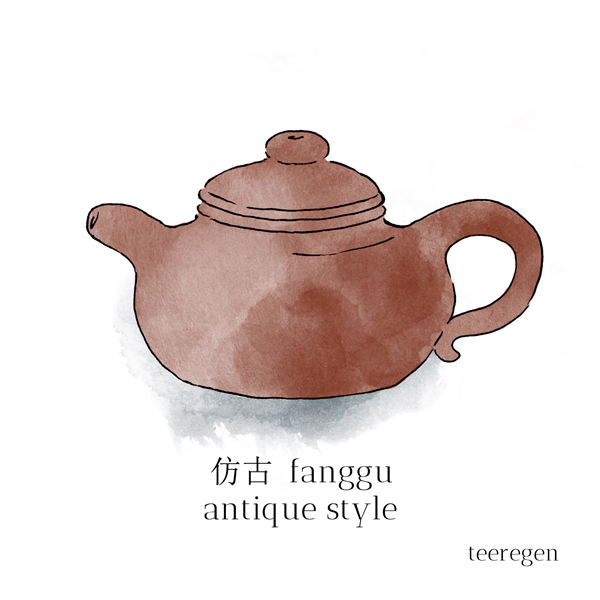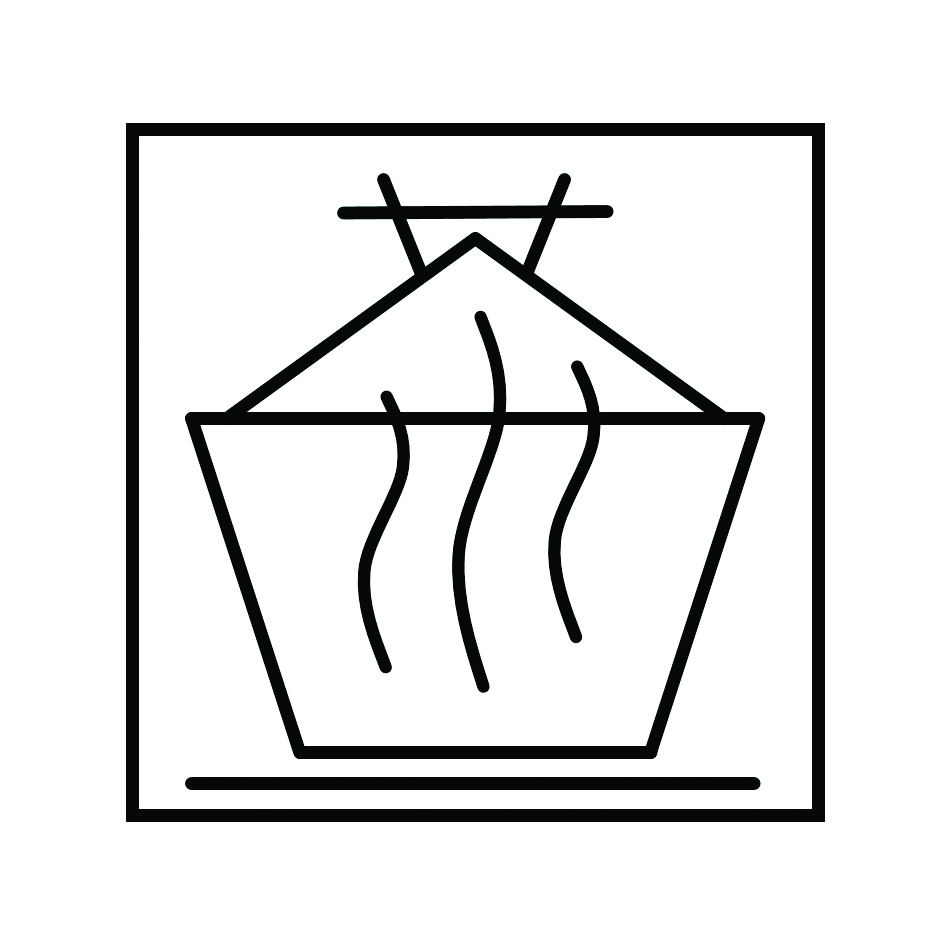Imitating antiques.

仿古
–
fang gu
–
antique style
Qing Dynasty teapot master 邵大亨 Shao Daheng is the inventor of this teapot shape. It is said that the original name for this shape was 仿鼓 fanggu (‘imitating drum’) as it looks like a flat drum. Later, as this shape was made over and over again, the name changed into 仿古 fanggu (‘imitating old’ – ‘retro’).
The teapot mimics a drum, with a convex body. The same elliptical shape is repeated in the lid and the lid knob, thus creating the illusion of three ellipse shapes stacked on top of each other, decreasing in volume toward the top. When looking down on the teapot from the top, you should also see three circles within one another. This second feature is of course not limited to fanggu teapots but is true for many round pots, a well-made pot should be symmetrical in this aspect as well.
The fanggu teapot should have clearly visible ‘shoulders’. Spout and handle are attached in a smooth transition without any visible edges. The curves of the spout and handle should be symmetrical.
A lot of fanggu teapots have a handle with a small tail called 飞 fei, adding a decorative, playful element.
Get yourself some ‚Teapot Shapes I‘ and ‚Teapot Shapes II‘ postcards!
LY
